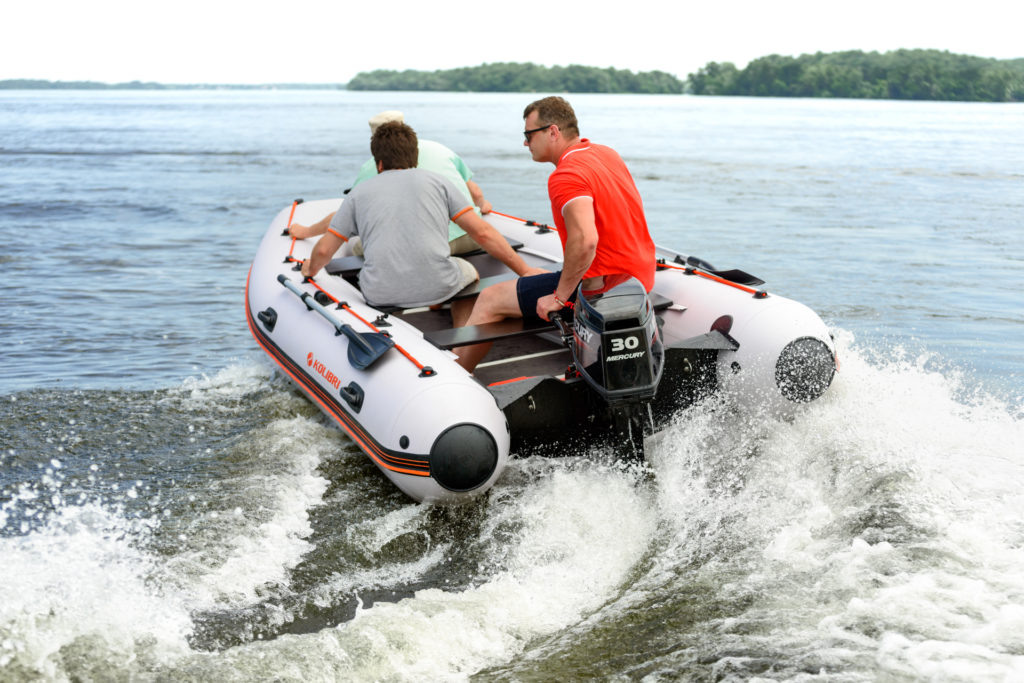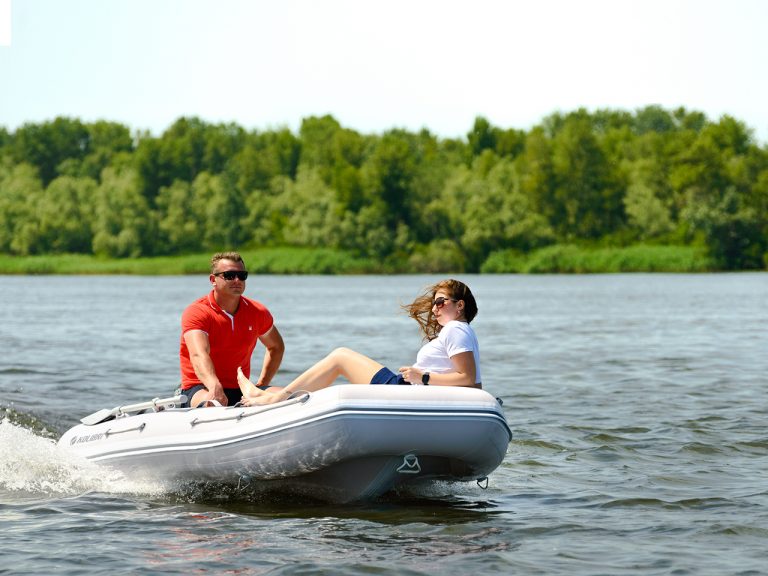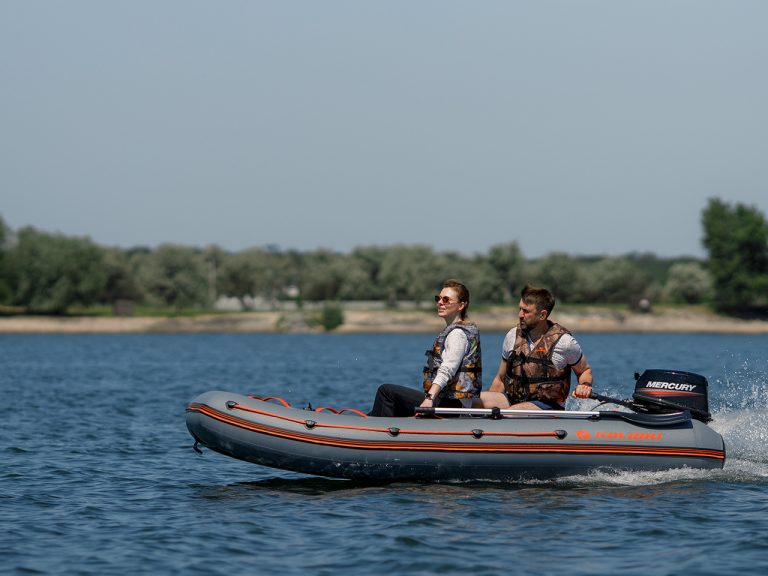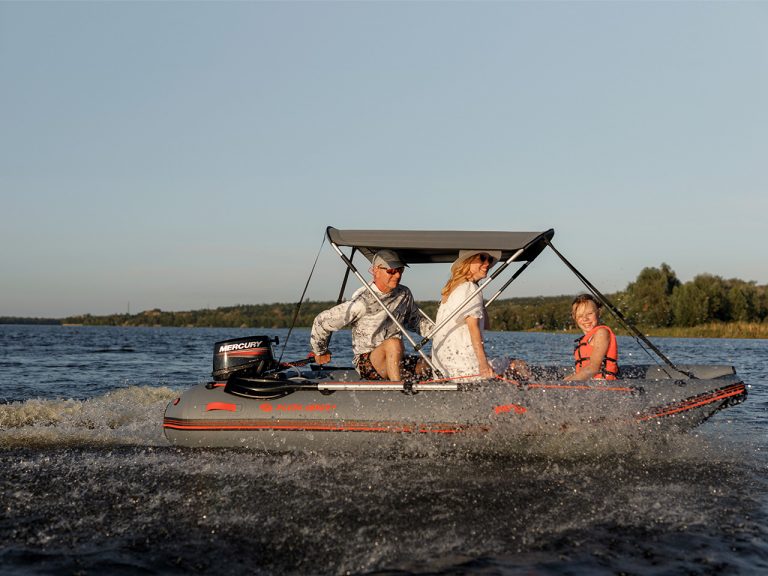How to choose an outboard motor
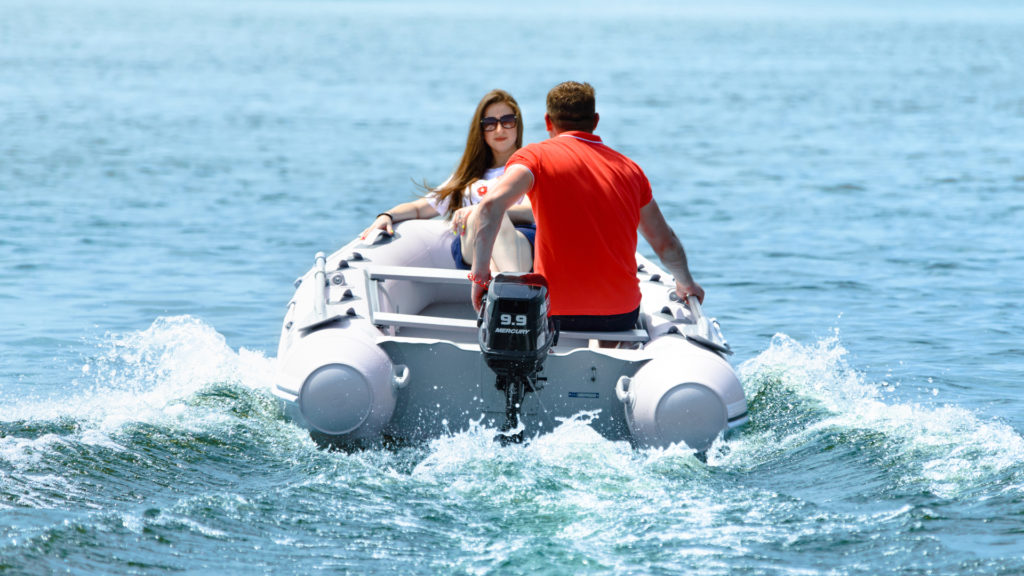
Motors for inflatable boats are one of the most important and expensive components. An inflatable motor boat is unthinkable without a motor, so you should choose a motor for a PVC boat carefully, thoughtfully and often seek advice from experts in this field. Different motors have their advantages and disadvantages. There is no sense in arguing which motor is better, it’s enough just to see how they differ and find out their pros and cons.
Types of outboard motors
Outboard motors can be divided into two large types: electric ones and gasoline ones (internal combustion engines). Gasoline engines, in turn, can be two-stroke or four-stroke, single-cylinder or two-cylinder, equipped with a carburetor or an injector.
Two-stroke gasoline engine
These are relatively low-cost motors; they do not weight a lot compared to four-stroke ones. In terms of maximum speed and acceleration, 2-stroke outboard motors are better. It is generally believed that in terms of environmental friendliness, two-stroke engines produce dirtier emissions — probably everyone can remember oil stains on the water after a motor boat passes by. The reason for this is that 2-stroke engines use a mixture of gasoline and oil as fuel, and since oil most often does not burn completely, the products of such incomplete combustion are ejected through the exhaust into the water. However, nowadays some branded manufacturers of outboard motors have significantly reduced the harmful emissions of their two-stroke engines and have come close to the concept of “clean exhaust”.
In terms of operation and storage, a two-stroke motor is more convenient, as it can be tilted and turned over without fear of oil from the crankcase entering the engine, as it can happen with a four-stroke engine.
A two-stroke outboard motor is good for fishermen and lovers of water hikes, who does not use a boat much and run the engine for about 30-50 running hours per season.
Advantages of a two-stroke motor:
- price;
- maintainability;
- speed and dynamics;
- weight.
Disadvantages of a two-stroke motor:
- fuel consumption;
- environmental friendliness;
- noise level.
Four-stroke gasoline engine
Such motor is noticeably more expensive than a two-stroke one. Four-stroke engines are quieter than two-stroke engines, but you can notice that only at low and medium RPM. Four-stroke motors have minimal vibration. Structurally, a four-stroke engine is more complicated than a two-stroke one, it has more parts and it is more difficult and more expensive to maintain. It is considered that four-stroke engines are more durable, because they have a separate system for using oil and fuel, which reduces friction and prolongs the life of components and parts, but in recent years, due to optimization, mass two-stroke outboard motors are not inferior to four-stroke engines in terms of durability.
Such outboard motors are better for frequent and long-term use during the season, for professional purposes.
Advantages of a four-stroke motor:
- fuel efficiency;
- environmental friendliness;
- noise level;
- durability.
Disadvantages of a four-stroke motor:
- price;
- weight;
- acceleration and speed;
- maintainability;
- inconvenience of storage and carrying.
Electric motor
It is fundamentally different from gasoline engines, electric motor is powered by a battery, runs very quietly, has a small weight and size, is easy to operate and is absolutely environmentally friendly. The speed of such engines is still significantly lower than that of boat internal combustion engines and is about 8-10 km/h. Power is up to 10 hp. The power reserve is limited by the capacity of the battery, usually an electric motor is able to work from 2 to 16 hours out of one full battery charge, which, of course, also depends on the driving style. It is useful to have spare batteries and a charger with you on board, although it’s not easy to find an electrical outlet or a generator for recharging far away from civilization.
The electric motor is good for small fishing boats, kayaks. Quite movement is a great advantage in fishing. In this case, your rest on the water will be almost perfect.
Type of outboard motor
Outboard gasoline engines are of two types — ones that are equipped with carburetor and ones that are equipped with injector.
Carburetor-equipped motors
A somewhat outdated system where the carburetor mixes liquid fuel with air in an optimal proportion to prepare a combustible mixture. Carburetor can be adjusted manually. Gasoline consumption in such engines is slightly higher than in injector-equipped engines. Such motors are cheaper, they are less environmentally friendly.
Injector-equipped motors
A more advanced system of fuel injection directly into the cylinder or into the intake manifold; such engines can be characterized by lower fuel consumption, they are more expensive, their acceleration is steadier, and they are more comfortable to control. Emissions are not so toxic.
Starting the boat engine
There are several ways to start a boat internal combustion engine:
- Manual start of a boat engine is when the motor shaft is rotated manually using a pulley with a cord wound on it. It requires effort, but is reliable because of its simplicity.
- Electric start of a boat engine is when the engine shaft is rotated by a special electric motor (starter), which is powered by its battery. It is activated by turning the key.
- A mixed (manual and electric) start of a boat engine is a combined engine start system, where the main system is electric, and in case of its failure, a manual start system can be used as an emergency one.
Motor for a boat: what you should focus on when choosing
When choosing a motor for an inflatable boat, first of all, you need to follow the technical documentation from the watercraft manufacturer — each boat is designed to use a motor of a certain power (power limit), it depends on the size and weight of the boat, the shape of its hull and transom.
For example, light rowing boats with a hinged transom (the “Standard” series) are designed to be used with motors with a power of 2.5 hp (1.8 kW) to 3.5 hp (2.6 kW).
Motorboats with a stationary transom, depending on the model, allow the use of motors from 3.5 hp (2.6 kW) to 12 hp (8.8 kW). For more advanced series of inflatable motor boats (Light, Profi series), motors with a power from 5 hp (3.7 kW) to 20 hp (14.7 kW) are usually preferred. The most powerful engines up to 35 hp (25.8 kW) are installed on the top models of boats (“SL”, “XL” series).
Electric motors are usually chosen for small boats, where speed is not crucial, but quiet movement and environmental friendliness are important. In this case, you should also consider the possible recharging or replacement of batteries and, as a result, plan the duration of a water hike.
Tips for using motors while hiking or fishing
1. For electric motors:
- Have a charger and a set of spare batteries on board in special waterproof cases.
2. For internal combustion engines:
- If you have a new engine, then to ensure the longest possible service life, you need to break it in, following special algorithms and manufacturer’s instructions.
- In case of a two-stroke engine, prepare the fuel (a mixture of gasoline and oil) in advance (a couple of days in advance), carefully observing the proportions.
- Have a supply of spark plugs for replacement on board.
Engine operation. The boat engine is controlled either by a special lever – rudder tiller mounted directly on the engine when the helmsman is sitting at the stern, or remotely when the helmsman is in the bow of the boat. The remote control system is used when the length of the boat exceeds 3.5 meters. This control system provides the helmsman with a better view and is more comfortable.


